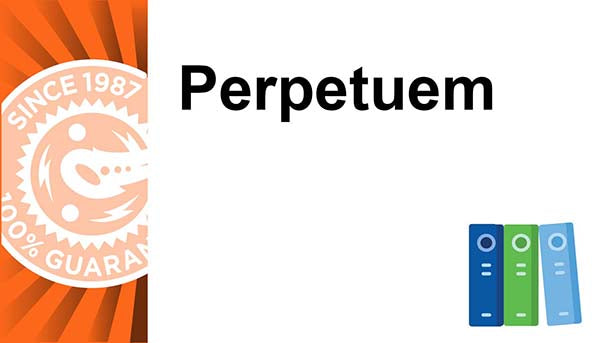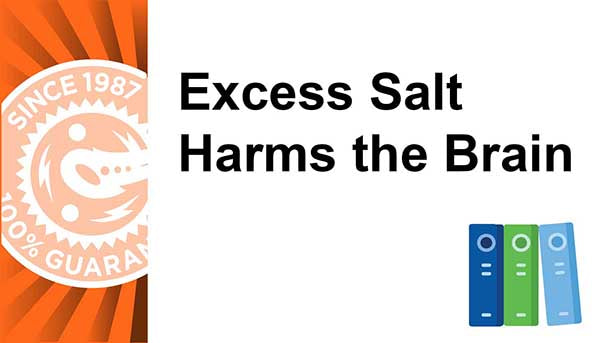By Dr. N.V. Perricone
The Perricone nutritional program provides the foods that reduce inflammation and avoids those that provoke it. Study the lists of foods that are approved and those that need to be to be avoided. There are 10 simple rules to the program:
- Each meal needs to include lean protein and carbohydrates (in the form of fruits and/or vegetables), and essential fatty acids from olive oil or fresh unsalted nuts.
- Be sure to include up to one tablespoon of olive oil and 1 cup of low fat yogurt 3x/week. (You can eat the yogurt for breakfast or as a snack between meals)
- Women need to consume 400 grams of lean protein per week, two servings of fruit and at least 4 servings of approved vegetables each day. (a apple or pear, 340 grams of berries or 113 grams of cut up fruit). Men need the same number of servings of fruits and vegetables, but should take in 450 grams of protein/week.
- Drink 8-10 glasses of water/day.
- Limit coffee to 1-2 cups/day.
- Take prescribed supplements at the recommended times, rather than all at once.
- Calories and quantities should be consumed evenly throughout the day.
- Don't go longer than 4-5 hours without eating to keep blood sugar level.
- Don't add fat to food when you cook.
- Don't cheat-- it will show up on your skin before it pads your hips!
BREAKFAST
If you are a traditionalist, the egg white or oatmeal breakfasts will fit into your routine. If time is short in the morning, these items can be picked up at the local coffee shop instead of the usual latte and bagel. If you tend to wake up hungry; the fish breakfast will be wonderfully satisfying. If eating is too much effort in the morning, a cool cup of yogurt will give you much needed protein and you don't even have to chew.
- Egg white omelet (made with 3 egg whites), 1 serving of fruit
- 113 grams unflavored oatmeal with skim milk, egg white omelet/1 serving of fruit
- Fresh fish, preferably broiled or poached/serving of fruit
- Non-fat unflavored yogurt fruit salad of melons, berries, apples, pears, 5 grams of slivered almonds
LUNCH
Lunches are designed to meet nutritional needs with easily obtainable foods. Don't use commercial salad dressings. Sprinkle the salads with 1/4 -1/2 ounce of extra virgin olive oil and a squeeze of fresh lemon juice. Make sure you get at least 4 ounces of protein at lunch. You can substitute 1/4-cup bean salad or 28 grams of bean dip for the fruit.
Lunch Menus:
- Small can of tuna fish, sliced tomatoes and cucumbers (top with chopped onions if you wish)(serving of fresh fruit from approved list)
- Steamed vegetables and shrimp, chicken or tofu (season with Chinese mustard or low sodium soy sauce/ 1 serving of fruit.)
- Smoked or grilled salmon (can use canned salmon, just drain off liquid they way you do with tuna) or sliced fresh turkey on a bed of lettuce, tomatoes, cucumbers, sliced radish, green pepper/ 1 serving of fruit
- Grilled chicken breast/tossed green salad/1 serving of fruit
- Grilled or poached shrimp make sure you eat at least six shrimp over a green salad, 1 serving of fruit
- 1/4 roast chicken (do not eat skin), green salad, 1 serving of fruit
- Broiled salmon/green salad/1 serving of fruit
- Turkey burger/ green salad or sliced tomatoes and lettuce/serving of fruit
- Small can of salmon/green salad/1 serving of fruit
- Small can of sardines in olive oil/green salad/1 serving of fruit
DINNER
You should be eating fish at least 10 times a week, which works out to at least one fish meal each day. To meet these goals, plan out what you are going to eat. Think about the demands of the upcoming day, and analyze what foods will be available for you. For example if you know that you are going to be in meetings all day, try to start off with a good supply of protein. If you're going out with friends steer them to a restaurant where you can get fish and a fresh salad rather than pizza or burgers and fries. The dinner menus that follow can be easily found in restaurants or made at home. If you like to cook, indulge your creativity with fresh fish and approved vegetables and seasonings. If you consider heating up a Lean Cuisine in a microwave cooking, you can find appropriate foods in restaurants and take out stores. If you haven't had two servings of fruit that day, finish the meal with melon or berries. Dr. Perricone recommends a daily salad that consists of lettuce, tomatoes, and cucumbers. To vary flavor each meal he advises adding on raw sliced mushrooms, green pepper strips, sliced radishes, and/or slivered celery. Toss salad with 1/4 - 1/2 ounce of olive oil and a few drops of fresh lemon juice to taste. Use black pepper and fresh herbs, but don't add salt. Keep in mind that these menus are just suggestions. You can mix and match any of the protein and vegetable choices as long as they are on the list of approved food items. Your chicken, fish and vegetables should be roasted, broiled, grilled, steamed or poached rather than fried or sauted.
- Broiled Salmon/asparagus/salad
- Teriyaki salmon/snow peas/salad
- Mussels in white sauce/spinach/salad
- Clams in red sauce (no pasta)/escarole/salad
- Sauted scallops with garlic and parsley/zucchini/salad
- Pan roasted salmon/cauliflower/salad
- Egg white omelet with smoked salmon/sliced tomatoes/salad
- Roast fresh turkey/Brussels sprouts/salad
- Baked chicken/green beans/salad
- Broiled chicken/asparagus/salad
- Broiled swordfish/broccoli/salad
- Shrimp cocktail/broccoli rabe/salad
- Broiled filet of sole/green beans/salad
SNACKS
Don't get too hungry. Use these snacks to feel energetic and fulfilled. Remember- each snack needs to contain the same components as a full meal-- lean protein, carbohydrates in the form of fruits or vegetables and essential fatty acids from olive oil or nuts.
- 14 grams of whole almonds or Macadamia nuts, one small apple, sliced low fat ham
- 6 black and green olives/celery sticks/ 2 slices smoked turkey
- A grilled or poached shrimp/280 grams of cantaloupe/14 grams of macadamia nuts
- 1 small pear, 2 slices turkey breast/14 grams of slivered almonds
- Raw veggies (green pepper strips, cherry tomatoes. sliced cucumbers)/ 28 grams of bean dip
FOOD LISTS
Foods to Avoid
Alcoholic beverages, bacon, bananas, breads, bagels, beef, beer, brandy, butter, breads, carrots, cream cheese, candy, cake, chocolate, cookies, cereals (except oatmeal), cornstarch, corn, corn syrup, croissants, dried fruit, duck, doughnuts, fruit juice, fried foods, flour, gin, grapes, goose, granola, hard cheese (except for feta and parmesan), honey, hot dogs, ice cream, jams and jellies, lamb, mango, margarine, molasses, mayonnaise, muffins, noodles, oranges pancakes, papaya, pastry, peas, pie, pizza, pasta, pickles, popcorn, pork, potatoes, pudding, pumpkin, raisins, relish, rice, rum, sherbet, soda, scones, sherry, sugar, tacos, veal, waffles, watermelon, whiskey, wine, whole milk
Foods to Enjoy
Almonds, asparagus, avocado, beans (black, kidney, lima), apples, bell peppers, broccoli, broccoli Rabe, blueberries, blackberries, brussel sprouts, cabbage, cantaloupe, clams, cottage cheese, lowfat), crab meat, chicken (white meat), capon, cauliflower, celery, Chilean sea bass, cod fish, coriander, cucumbers, dill, egg whites, eggplant, endive, escarole, fat-free milk, feta cheese, fennel, flounder, filet of sole, garlic, grapefruit, ginger, halibut, honeydew melon, kiwi fruit, kale, legumes, lentil soup, lobster, lemons, leafy greens, lettuce, monkfish, mushrooms, mussels, nectarines, nuts, oatmeal, onions, olive oil, olives, parmesan cheese, peaches, pecans, parsley, pears, plums, radish, raspberries, spinach, scallops, Swiss chard, scallions, snow peas, smoked salmon, sardines, shrimp, salmon, salmon trout, soy beans, sour cream, swordfish, tea (black and especially green), tomatoes, tomato juice, tofu, turkey, yogurt, (non-fat, unflavored), walnuts, zucchini
GETTING A BETTER FOCUS ON FOODS
Putting together antioxidant-rich meals while avoiding foods that will send your blood sugar sky high is simple once you have an idea of what to look for. Here are a few lists to use as a guideline.
Good Carbohydrates (those low on the glycemic index)
Asparagus, Citrus fruits, Plums, Beans, Honeydew melon, Spinach, Broccoli, Kiwi fruit, Most nonstarchy vegetables, Blueberries, Leafy greens, Cabbage, Peaches, Cantaloupe, Pears
Bad Carbohydrates (those high on the glycemic index)
Bananas, Corn, Pasta, Breads, Fruit juices (eat whole fruits), Potatoes, Carrots Mangoes, Rice, Cereals processed with added sugar, Pancakes, Sugar, Papaya, Waffles
Antioxidant Best Bets
Avocado(but high in fat and calories), Cantaloupe / honeydew melons, Pineapple (but high in sugar), Bell peppers, Dark green leafy vegetables, such as spinach and kale (lightly cooked), Salmon (fresh, broiled or poached), Berries, Orange-colored squash, Tomatoes
STARCH FOOD LIST http://www.diabetic.com/mealsncarbs/starch.html
| Description | Serving Size | Carbs |
| Animal crackers | 8 | 15 |
| Bagel | 1/2 (1 oz) | 15 |
| Baked beans | 1/3 cup | 15 |
| Bran cereals | 1/2 cup | 15 |
| Bread | 1 slice | 15 |
| Bread sticks | 2 (2/3 oz) | 15 |
| Bread, reduced-calorie | 2 slices (1 1/2 oz) | 15 |
| Bulgur | 1/2 cup | 15 |
| Cereals, unsweetened | 3/4 cup | 15 |
| Corn | 1/2 cup | 15 |
| Corn on cob | 1 (5 oz) | 15 |
| Cornmeal (dry) | 3 Tbsp | 15 |
| Couscous | 1/3 cup | 15 |
| English muffin | 1/2 | 15 |
| Flour (dry) | 3 Tbsp | 15 |
| Graham crackers, 2 1/2 in. square | 3 | 15 |
| Granola, low-fat | 1/4 cup | 15 |
| Grits | 1/2 cup | 15 |
| Hamburger bun | 1/2 (1 oz) | 15 |
| Hot dog bun | 1/2 (1 oz) | 15 |
| Kasha | 1/2 cup | 15 |
| Matzoh | 3/4 oz | 15 |
| Melba toast | 4 slices | 15 |
| Millet | 1/4 cup | 15 |
| Muesli | 1/4 cup | 15 |
| Oats | 1/2 cup | 15 |
| Oyster crackers | 24 | 15 |
| Pasta | 1/2 cup | 15 |
| Peas, green | 1/2 cup | 15 |
| Pita, 6 in. across | 1/2 | 15 |
| Plantain | 1/2 cup | 15 |
| Popcorn | 3 cups | 15 |
| Potato, baked or boiled | 1 small (3 oz) | 15 |
| Potato, mashed | 1/2 cup | 15 |
| Pretzels | 3/4 oz | 15 |
| Puffed cereal | 1 1/2 cups | 15 |
| Raisin bread | 1 slice (1 oz) | 15 |
| Rice cakes, 4 in. across | 2 | 15 |
| Rice milk | 1/2 cup | 15 |
| Rice, white or brown | 1/3 cup | 15 |
| Roll | 1 (1 oz) | 15 |
| Saltine-type crackers | 6 | 15 |
| Snack chips, fat-free (tortilla, potato) | 15-20 (3/4 oz) | 15 |
| Squash, acorn | 1 cup | 15 |
| Squash, butternut | 1 cup | 15 |
| Sugar-frosted cereal | 1/2 cup | 15 |
| Tortilla, corn, 6 in. across | 1 | 15 |
| Tortilla, flour, 7-8 in. across | 1 | 15 |
| Waffle, 4 1/2 in. square | 1 | 15 |
| Wheat germ | 3 Tbsp | 15 |
| Whole-wheat crackers, no fat added | 2-5 (3/4 oz) | 15 |
| Yam, sweet potato | 1/2 cup | 15 |
Glycemic Index
Rick Mendosa
A glycemic index is basically a classification of how high and how fast particular carbohydrate foods raise blood sugar. This index compares the way carbohydrate foods raise blood sugar with the way white bread raises it. White bread is assigned an index number of 100. (There is another glycemic index that use straight glucose as the comparison). Generally speaking, for a person with diabetes, a low (slow-releasing) glycemic index food is preferred to a high (fast-releasing) glycemic index food. The following chart shows the glycemic index of a variety of foods that have been tested, including indigenous foods of regions around the world. For further information on the glycemic index, see the article The Glycemic Index.
Glycemic Index
| BAKERY PRODUCTS | |||
| Donut | 108 | Waffles | 109 |
|
BREADS | |||
| Bagel, white | 103 | Pumpernickel | 71 |
| Melba toast | 100 | Wheat bread, white | 101 |
| Wheat bread, wholemeal flour | 99 | ||
|
BREAKFAST CEREALS | |||
| All-bran | 60 | Cheerios | 106 |
| Cornflakes | 119 | Cream of Wheat | 100 |
| Grapenuts | 96 | Oat Bran | 78 |
| Oatmeal | 87 | Rice Bran | 27 |
| Rice Krispies | 117 | Shredded Wheat | 99 |
| Special K | 77 | Total | 109 |
|
CEREAL GRAINS | |||
| Barley, pearled | 36 | Buckwheat | 78 |
| Cornmeal | 98 | Millet | 101 |
| Rice, brown | 79 | Rice, parboiled | 68 |
| Rice, white | 83 | Sweet corn | 78 |
|
CRACKERS | |||
| Stoned Wheat Thins | 96 | ||
|
DAIRY PRODUCTS | |||
| Ice cream | 87 | Ice cream, low fat | 71 |
| Milk, full fat | 39 | Milk skim | 46 |
| Yogurt, low fat, artificially sweetened | 20 | ||
|
FRUIT AND FRUIT PRODUCTS | |||
| Apple | 54 | Apple juice | 58 |
| Apricots, dried | 44 | Apricots, fresh | 82 |
| Banana | 77 | Cherries | 32 |
| Dates | 141 | Grapefruit | 36 |
| Grapes | 66 | Orange | 63 |
| Orange juice | 74 | Peach, fresh | 60 |
| Pear, fresh | 53 | Pineapple | 94 |
| Pineapple juice | 66 | Plum | 55 |
| Raisins | 91 | Watermelon | 103 |
|
LEGUMES | |||
| Black beans | 43 | Black-eyed beans | 59 |
| Broad beans (fava beans) | 113 | Chick peas (garbanzo beans) | 47 |
| Kidney beans | 42 | Lima beans, baby, frozen | 46 |
| Navy beans juice | 54 | Pinto beans | 55 |
| Soy beans | 25 | ||
|
PASTA | |||
| Fettuccine | 46 | Linguine | 65 |
| Macaroni | 64 | Spaghetti, wholemeal | 53 |
|
ROOT VEGETABLES | |||
| Beets | 91 | Carrots | 70 |
| Parsnips | 139 | Potato, baked | 121 |
| Potatoes, french fries | 107 | Rutabaga | 103 |
| Sweet potato | 77 | ||
|
SNACK FOOD AND CONFECTIONARY | |||
| Popcorn | 79 | Pretzels | 116 |
|
SOUPS | |||
| Split pea soup | 86 | ||
|
SUGARS | |||
| Fructose | 32 | Glucose | 137 |
| Glucose tablets | 146 | Honey | 83 |
| Lactose | 65 | Maltose | 150 |
| Sucrose (table sugar) | 92 | ||
|
VEGETABLES | |||
| Peas, dried | 32 | Peas, green | 68 |
Source: Jennie Brand-Miller, et al. The Glucose Revolution: The Authoritative Guide to the Glycemic Index, The Groundbreaking Medical Discovery (New York: Marlowe & Company). Used with permission.
This article appeared originally on the DiabetesWebSite.com, which is no longer on-line. Last modified: April 16, 2003 http://www.mendosa.com/ http://www.mendosa.com/
Rick Mendosa's Home Page http://www.mendosa.com/diabetes.htm
Rick Mendosa
238 Coronado Drive
Aptos, California 95003-4011
E-mail: mendosa@mendosa.com
Telephone: (831) 688-5300








